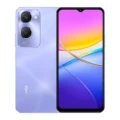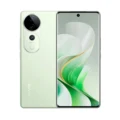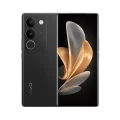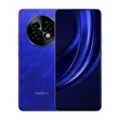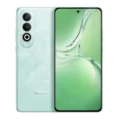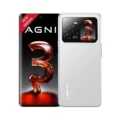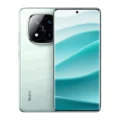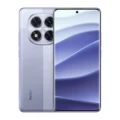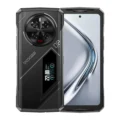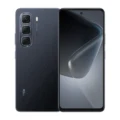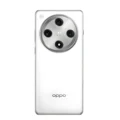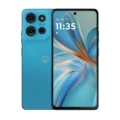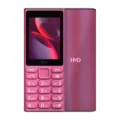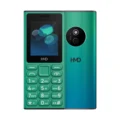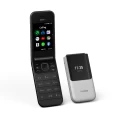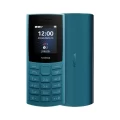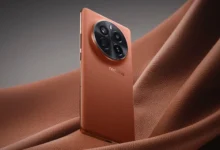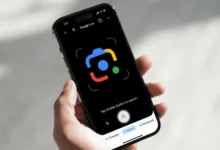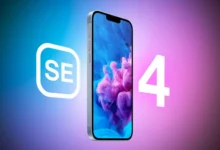Vivo Y21T



Specifications
General
| Name | Vivo Y21T |
| Brand | Vivo |
| Model | Y21T |
| Announced | 03 January, 2022 |
| Launch Date | 10 January, 2022 |
| Manufacturer Manufacturer (or Made by): Indicates the company or brand responsible for making the product. | Vivo |
| Made in Made in (or Country of Origin): Indicates the country where the product was manufactured. | Bangladesh |
Display
| Display Type | IPS LCD |
| Screen Size | 6.51-inch (16.71 cm) |
| Resolution | 1600×720 (HD+) |
| Aspect Ratio | 20:9 |
| Pixel Density Pixel Density: Pixels per inch and pixels per centimetre are measurements of the pixel density of an electronic image device, such as a computer monitor or television display, or image digitizing device such as a camera or image scanner. | 401 ppi |
| Refresh Rate | 90 Hz |
| Multitouch Multitouch: Smartphone multitouch is a technology that allows the screen to recognize and respond to multiple touch points simultaneously. It enables users to perform gestures like pinch-to-zoom, rotation, and swiping with multiple fingers, enhancing the overall interactivity and usability of the device. | |
| Color Depth Color Depth: Color depth or colour depth, also known as bit depth, is either the number of bits used to indicate the color of a single pixel, or the number of bits used for each color component of a single pixel. When referring to a pixel, the concept can be defined as bits per pixel. | 16.7 million colors (8-bit) |
| Bezel-less Design Bezel-less display: A bezel-less display minimizes or eliminates the non-display areas around the screen, providing a sleek, immersive look and maximizing the visual experience. | Yes with a waterdrop notch |
| Screen Protection Screen Protection: Display protection refers to the various technologies and materials used to safeguard a smartphone's screen from damage such as scratches, cracks, and impacts. | No |
| Screen Ratio Screen-to-body ratio: Percentage of a device's front surface occupied by the display, indicating how efficiently the space is used for the screen. Higher ratios mean more immersive displays. | 83.76% |
Design
| Height | 164.26 mm |
| Width | 76.08 mm |
| Thickness | 8.00 mm |
| Weight | 182g |
| Material Built Material: The physical construction materials of a smartphone, influence its durability, weight, and aesthetic qualities. Common materials include metal, glass, plastic, ceramic, etc. |
Front: Glass Body: Plastic |
| Colors | Midnight Blue, Pearl White |
| Waterproof | No |
| Ruggedness | Dustproof |
Camera
| Rear Camera | Triple |
| Resolution |
50 MP f/1.8, (Primary) Camera 2 MP f/2.4, (Macro) Camera 2 MP f/2.4, (Depth) Camera |
| Autofocus | Yes |
| Rear Flash | Rear LED flash |
| Image Resolution | 8150 x 6150 Pixels |
| Settings | Exposure compensation, ISO control |
| Shooting Modes |
Continuous Shooting High Dynamic Range mode (HDR) |
| Camera Features | Photo, Portrait (basic), Video, Pano, Live Photo, Time-Lapse, Pro, DOC |
| Video Recording | 1920×1080 @ 30 fps |
| Front Camera | Single |
| Resolution | 8MP f/2.0 Front Camera |
| Autofocus | Yes |
| Video Recording | 1920×1080 @ 30 fps |
Battery
| Capacity Battery Capacity: Battery capacity in smartphones refers to the amount of energy a battery can store, typically measured in milliampere-hours (mAh). It indicates how long a battery can power the device before needing a recharge. | 5000mAh (TYP) |
| Battery Type | Lithium-Polymer |
| Removable Removable Battery: A removable battery in a smartphone is a battery that users can easily take out and replace without tools. Removable batteries were more common in older models; modern smartphones favor non-removable batteries for sleeker designs and better water resistance. | |
| Wired Charging | 18W Fast Charging |
Performance
| Chipset Chipset: In smartphones, the chipset is like the device's brain, controlling everything from processing tasks to managing connectivity. It includes the CPU, GPU, modem, and other components, determining the device's performance and capabilities. Different smartphones use different chipsets made by companies like Qualcomm or MediaTek. | Qualcomm Snapdragon 680 |
| CPU CPU (Central Processing Unit) Clock Speed: The CPU, commonly known as the processor, is responsible for processing instructions to perform various functions that enable a device to operate properly. Often described as the brain of computers, smartphones, and tablets, the CPU plays a crucial role in executing tasks and running applications on these devices. Smartphones and tablets rely heavily on their processors to carry out every task, from running apps to managing system operations. Therefore, the processor is an incredibly important factor to consider when selecting any type of computing device, including smartphones. | Octa-core (2.2 GHz, Quad core, Kryo 265 + 1.8 GHz, Quad core, Kryo 265) |
| Architecture Instruction Set Architectures (ISAs): In the context of smartphones, "architecture" refers to the design and structure of the processor, which determines how it processes information and executes instructions. This encompasses the processor's instruction set, memory management, and overall design principles. One common term related to architecture is "64-bit architecture," which has significant implications for performance and capabilities. | 64 bits |
| Fabrication Semiconductor Fabrication: Fabrication in the context of semiconductors and microprocessors refers to the process of manufacturing integrated circuits (ICs) or chips. This involves creating the physical structures of a chip, such as transistors and other electronic components, on a silicon wafer. The term "fabrication" is often used interchangeably with "process node" or "technology node," which indicates the manufacturing technology used to create these chips. | 6 nm |
| GPU GPU (Graphics Processing Unit): The GPU in a smartphone is a specialized processor designed to handle the rendering of images, animations, and video, as well as other tasks involving graphics and visual data. It works alongside the CPU (Central Processing Unit) to deliver a smooth and visually rich experience. | Adreno 610 |
| RAM Random Access Memory (RAM): RAM is a type of computer memory that is used to store data temporarily while a device is in use. RAM is a critical component in smartphones, enabling fast access to data, smooth multitasking, and efficient operation of applications. The amount and type of RAM can significantly impact the performance and user experience of a smartphone. | 4 GB |
| RAM Type | LPDDR4X |
| User Interface User interface (UI): A custom user interface (UI) is a layer of software that manufacturers often develop on top of the base operating system to differentiate their devices, enhance user experience, and add unique features. Custom UIs provide additional functionalities, themes, and design elements that are not present in the stock OS. | Funtouch OS |
| Operating System Operating System (OS): The operating system is the core software that manages all the hardware and software resources on a smartphone. It provides a platform for running applications and controls basic functions such as managing memory, processing tasks, and handling input/output operations. | Android v11.1 |
Storage
| ROM ROM (Read-Only Memory): In the context of smartphones and other electronic devices, ROM typically refers to the built-in storage where the operating system, system files, and pre-installed apps are stored. | 128 GB |
| MicroSD Card MicroSD Card Slot: A microSD card is a small, portable storage device used to expand the storage capacity of electronic devices, including smartphones, tablets, digital cameras, and more. It's inserted into a device's MicroSD card slot to store extra photos, videos, music, and other data. | Yes, Dedicated slot |
| Expandable Storage | Up to 1TB |
| Storage Type Storage Type: In smartphones, storage types typically include built-in eMMC or UFS (Universal Flash Storage) for internal storage, and expandable storage options like MicroSD cards. | eMMC 5.1 |
Network
| SIMs | Dual SIM and Dual Standby (DSDS) |
| SIM Size | Nano |
| SIM Slot Type | 2 nano SIMs + 1 micro SD |
| Network Support | 2G, 3G, 4G |
| Network Speed | HSPA 42.2/5.76 Mbps, LTE-A Cat4 150/50 Mbps |
| Technology | GSM / HSPA / LTE |
| VoLTE VoLTE (Voice over LTE): VoLTE is a technology that allows voice calls to be made over a 4G LTE network, rather than the traditional 2G or 3G networks. In summary, VoLTE enhances call quality and functionality by using the 4G LTE network for voice communications. | |
| 2G Bands 2G (Second Generation): 2G is a wireless technology standard for mobile telecommunications that was introduced in the 1990s and enabled the transmission of digital voice and data services, using digital transmission instead of analog. It has slower data speeds compared to later generations like 3G and 4G. | GSM 1800 / 1900 / 850 / 900 MHz |
| 3G Bands | UMTS 1900 / 2100 / 850 / 900 MHz |
| 4G Bands |
TD-LTE 2600(band 38) / 2300(band 40) / 2500(band 41) FD-LTE 2100(band 1) / 1800(band 3) / 900(band 8) / 850(band 5) |
| GPRS GPRS (General Packet Radio Service): General Packet Radio Service is a packet-oriented mobile data standard on 2G and 3G cellular communication networks' global system for mobile communications (GSM). In summary, GPRS is a mobile data service that enhances the data capabilities of 2G and 3G networks, providing basic internet and multimedia services. | |
| EDGE EDGE (Enhanced Data rates for GSM Evolution): Enhanced Data rates for GSM Evolution is a technology used to improve the data transmission rates of 2G GSM networks. In summary, EDGE boosts the data transmission capabilities of 2G networks, providing faster speeds and improved performance for mobile internet access. |
Connectivity
| Wi-Fi Wi-Fi: Wi-Fi is a wireless networking technology that allows electronic devices to connect to a local area network (LAN) wirelessly, typically using the 2.4 gigahertz (GHz) or 5 GHz radio frequency bands. | 2.4GHz /5GHz |
| Wi-Fi Features | Mobile Hotspot |
| Bluetooth | Bluetooth v5.0 |
| NFC NFC (Near Field Communication): NFC is a wireless technology that enables devices like smartphones and payment terminals to communicate when they're close together, facilitating contactless transactions and data transfer. | No |
| OTG OTG (On-The-Go): The full form of OTG is On-The-Go . OTG is a USB (Universal Serial Bus) standard that allows USB devices to be connected. Without using a computer connection, USB OTG items can connect. You can connect your mobile phone or tablet to various gadgets using a USB OTG link. | Yes |
| Browser Browser: A browser is a software application used to access and view information on the World Wide Web. It allows users to navigate through websites, view web pages, and interact with various online content such as text, images, videos, and other multimedia resources. | HTML5 |
| IR Blaster Infrared (IR) blaster: Some smartphones may come with an infrared (IR) blaster, which allows your smartphone to act as a universal remote control for controlling other devices, such as TVs, set-top boxes, and home appliances, that use infrared technology for communication. | No |
| USB Interface | Type-C |
Sensors
| Fingerprint Fingerprint: A fingerprint, in the context of smartphones and other devices, refers to a biometric authentication method that uses the unique patterns on a person's fingertip to verify their identity. | |
| Face Unlock Facial Recognition: Face Unlock is a biometric authentication feature found in many smartphones. It uses facial recognition technology to identify and authenticate users, allowing them to unlock their devices simply by looking at the front-facing camera. | |
| Other Sensors | Accelerometer, Ambient light sensor, Proximity Sensor, E-compass, Gyroscope |
Multimedia
| FM Radio | |
| Loudspeaker | Yes |
| Earphone Jack | 3.5 mm |
| Voice Recording | Yes |
| Audio Playback | WAV, MP3, MP2, MIDI, Vorbis, APE, FLAC |
| Video Playback | MP4, 3GP, AVI, MKV, FLV |
| Video Formats Video formats recorded: The file formats used for saving videos. | MP4 |
Vivo Y21T smartphone is available in Metallic Blue and Pearl White color options. Vivo Y21T mobile phone is powered by Qualcomm Snapdragon 680 processor with 4GB RAM & 128GB ROM 5000 mAh battery + 18W fast charge. 50MP+2MP+2MP rear 8MP front camera with authentic portraits of facial beauty.
Vivo Y21T Highlights
Vivo Y21T offers a 6.58-inch IPS LCD type display, equipped with a waterdrop notch that houses a front camera. Its bezel-less display has an aspect ratio of 20:9, a pixel density of 401ppi, and a resolution of 1080 x 2408 pixels.
A 50MP f/1.8 primary camera, a 2MP f/2.4 macro camera, and a 2MP f/2.4 depth sensor are available on the rear side of the Vivo Y21T. Some of the critical features of this camera setup are ISO control, exposure compensation, HDR mode, and LED flash. On the smartphone front, Vivo has included an 8MP f/1.8 primary camera for self-portraits.
The inner workings of the Vivo Y21T are powered by a Qualcomm Snapdragon 680 chipset (6nm) and an octa-core processor, forming a dual Kryo 265 layout, capable of clocking a maximum speed of 2.2GHz. Moreover, it is equipped with 4GB LPDDR4X type RAM and an Adreno 610 GPU that provides consistency and an ideal visual experience.
The brand has placed a removable 5000mAh battery inside the Y21T. It is a Li-ion type cell compatible with an 18W fast charging system.
Users will get 128GB of internal storage with this smartphone which belongs to the UFS 2.1 category. Special storage can be expanded up to 1TB. Vivo Y21T supports 4G VoLTE network connectivity for communication purposes. Other features available in the device include Mobile Hotspot, Wi-Fi 802.11, b/g/n/n 5GHz, Bluetooth v5.0, USB Type-C, A-GPS with Glonass, and USB OTG.
Pros and cons of Vivo Y21T
| Pros | Cons |
|---|---|
| Excellent build quality | No Gorilla Glass protection |
| 5000 mAh battery with 18W fast charger | Lack of various storage options |
| Amazing gaming experience | Did not support 5G connectivity |
| FunTouch 12 Custom UI Support | Average Sound Output |
| Dedicated Secondary Storage | Bloatware is present in the interface |
| Takes decent pictures in daylight | Less powerful chipset |
| Ultra Game Mode | Not Designed for Hardcore Gaming |
| Mediocre video recording quality | |
| Without NFC or 5G support |
Conclusion
Vivo Y21T is totally worth it at this price for daily use, camera and battery performance are also great, so expect good performance in games.
Frequently Asked Questions
It will launch in January 2022.
The price of the Vivo Y21T is BDT. 19,990.
It has one variant (4GB RAM and 128GB ROM) on the market.
It comes with a 6.51″ LCD display panel.
It contains Qualcomm SM6225 Snapdragon 680 4G (6 nm) chipset.
No, It supports a 4G network with 2G / 3G.
The battery capacity is a 5000mAh Li-Polymer battery.
Vivo manufactured it and this phone is made in China.
Reviews
Disclaimer Note
The information on this page may not be entirely accurate or up-to-date. Product prices are approximate and may vary based on taxes, import duties, and other factors.



